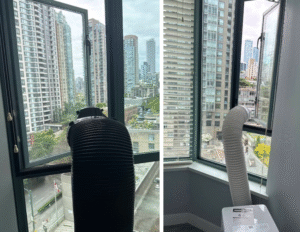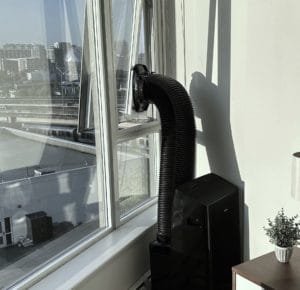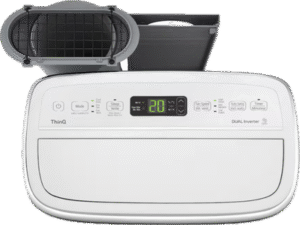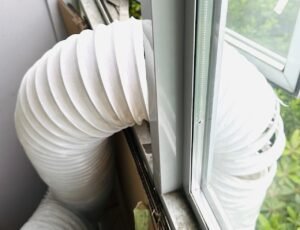Velcro Adhesive Heat Exposure & Performance Policy
Aircon Rescue Inc. uses industrial-grade Velcro adhesive rated for continuous temperatures up to 35 °C (104 °F).
Adhesive softening or release can occur if surrounding surfaces exceed this temperature due to direct sunlight, reflective heat, or restricted exhaust airflow.
These are environmental conditions outside the control of Aircon Rescue Inc. and are not covered under warranty.
Service visits or Velcro replacement required as a result of heat exposure are subject to standard labour and material charges.
Why Velcro Adhesive Can Fail on AC Panels — and How to Prevent It
While Velcro adhesive failure on AC panels is relatively rare, it can occur under certain conditions — especially when portable air conditioners generate excess heat or window frames are exposed to direct sunlight.
If you’ve noticed your panel shifting or the Velcro coming loose, overheating is the most common cause.
At Aircon Rescue, we’ve seen this happen in only about 1% of installations, almost always linked to environmental heat exposure rather than product defects. This guide explains the main causes of adhesive softening, why it happens, and what you can do to prevent it.
1. Window Frame Overheating
When window frames — especially black or bare aluminum — are exposed to direct sunlight, they can heat well beyond the adhesive’s rated limit of 35 °C.
Environmental factors such as sunlight intensity, frame color, and building orientation can cause frames to overheat unpredictably. These temperature variables are impossible to anticipate or control, meaning that in some cases the frame may reach a point where the adhesive softens and can no longer support the panel’s weight.
In rare instances where extreme heat exposure is unavoidable, screws may be used to secure the AC panel, similar to how window screens are fastened, to ensure long-term stability.
2. Window Closed or Not Opened Wide Enough
Running the AC while the window is partially or fully closed traps hot exhaust air between the panel and glass. This reflected heat can quickly raise surface temperatures to 40–50 °C — exceeding the adhesive’s rated limit and causing it to soften or release within minutes.
How to Prevent It:
-
Always keep the window open at least 6 inches while the AC operates.
-
Make sure the exhaust hose vents freely without blockage or kinks.
-
After window cleaners service your windows, ensure they’re fully reopened before restarting the unit.
3. Dirty or Clogged Air Filters
When filters are dirty, airflow becomes restricted and the compressor must work harder, producing hotter exhaust temperatures.
This trapped heat can cause the air between the window and panel to rise above 40 °C or more, leading to adhesive softening and potential Velcro separation.
How to Prevent It:
-
Monitor filters regularly to ensure they remain clean and free of dust, lint, or pet hair.
4. Low Refrigerant or AC Malfunction
Units with low refrigerant or internal damage must work harder, generating excess exhaust heat that can exceed 50 °C. This not only affects cooling performance but also contributes to adhesive failure.
How to Prevent It:
-
Have your unit inspected if cooling seems weak or inconsistent.
-
Avoid using second-hand units with unknown service histories.
🔧 About the Velcro Adhesive
Aircon Rescue panels use industrial-grade hook-and-loop adhesive rated for continuous exposure up to 40 °C
Under normal use and installation conditions, it holds securely for multiple seasons.
If ambient or exhaust temperatures exceed this limit, adhesive softening may occur. This is an environmental condition, not a product defect.
🛠️ Service & Repair
If your Velcro has released due to heat exposure, we can help with a reinstallation of the velcro:
-
Removal of old adhesive and surface prep
-
Application of new industrial-grade Velcro
-
Inspection of AC filters and exhaust setup
Service Time: 30–60 minutes
Cost: $55 + tax for 1 window $15 for each additional window
Because adhesive softening results from environmental heat, it’s not covered under warranty, but our team can restore your panel quickly and affordably.
✅ Final Thoughts
Velcro adhesive doesn’t fail without a reason. In nearly every case, excess heat — from sunlight, trapped exhaust, or restricted airflow — is to blame.
By maintaining proper airflow, keeping filters clean, and ensuring your window remains open while the AC runs, you can prevent overheating, keep your panel secure, and enjoy efficient cooling all summer long.







